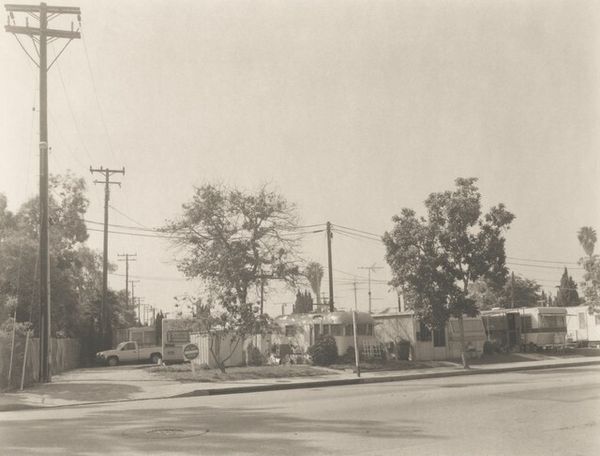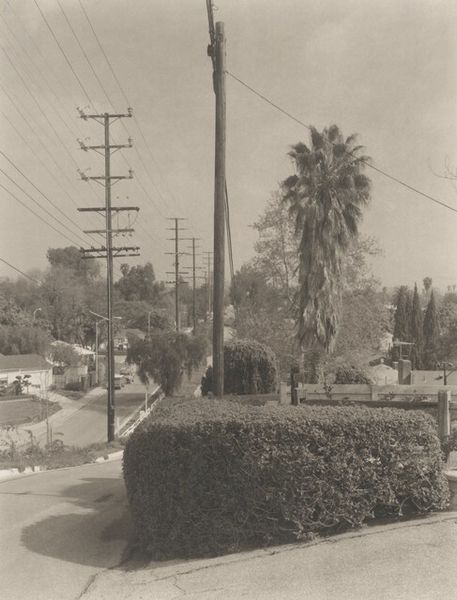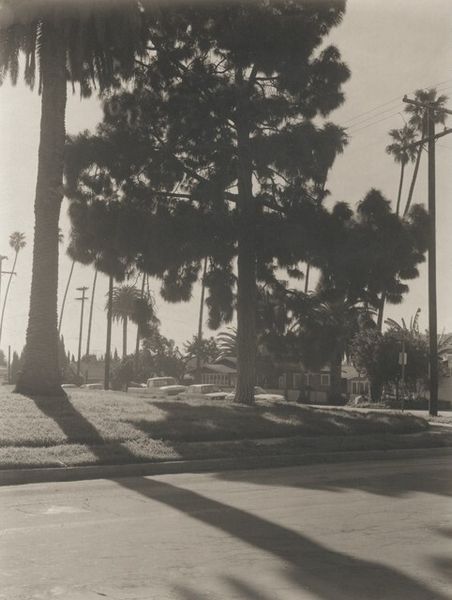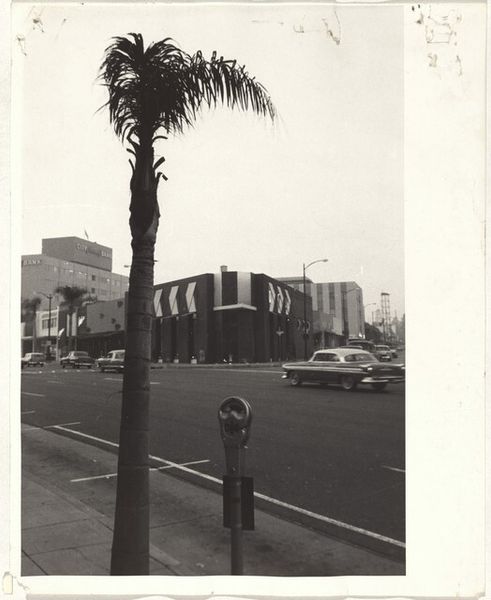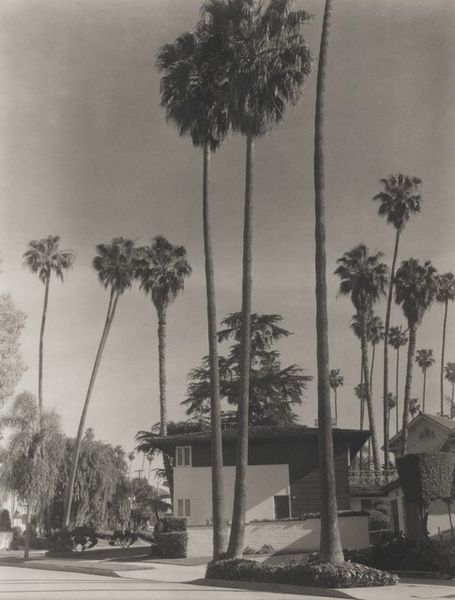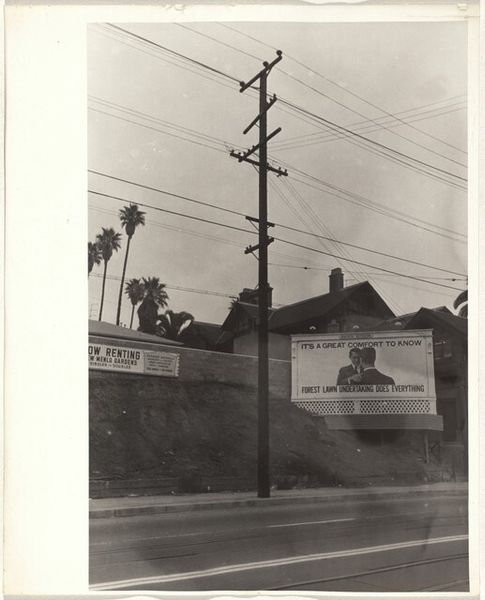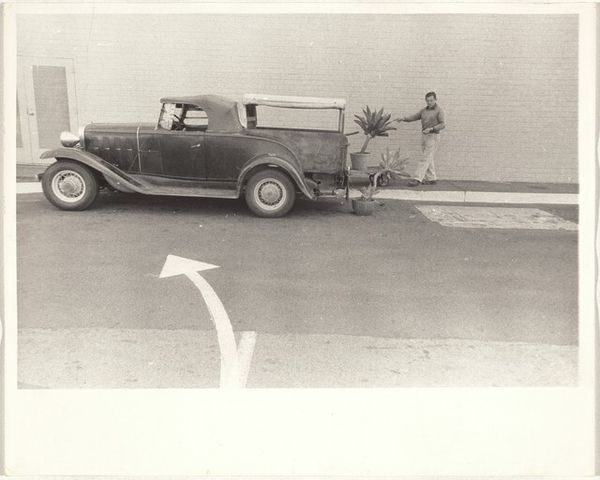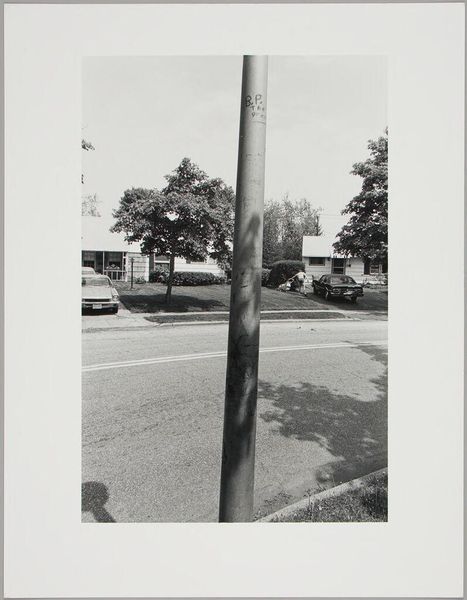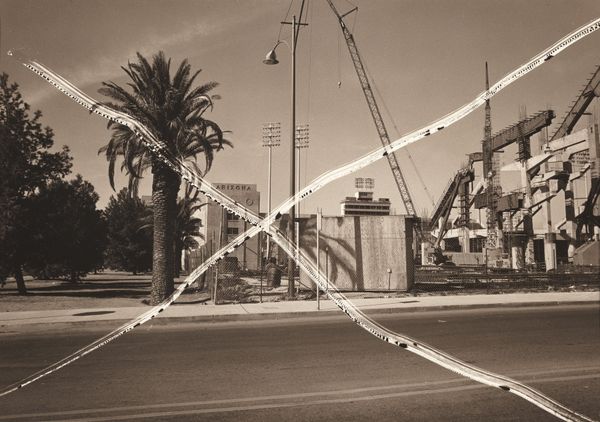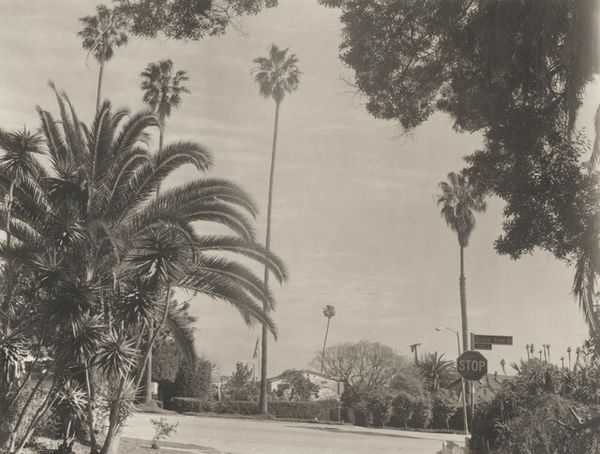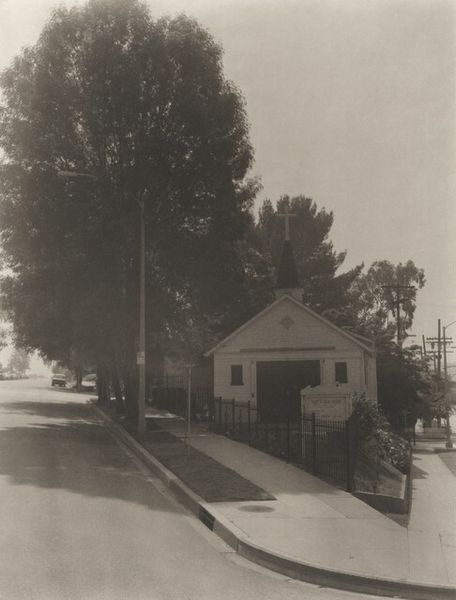
photography, gelatin-silver-print
#
black and white photography
#
landscape
#
street-photography
#
photography
#
gelatin-silver-print
#
monochrome photography
#
cityscape
#
monochrome
#
realism
#
monochrome
Dimensions: image: 34.1 × 25.8 cm (13 7/16 × 10 3/16 in.) sheet: 42.4 × 35.1 cm (16 11/16 × 13 13/16 in.)
Copyright: National Gallery of Art: CC0 1.0
Curator: Madoka Takagi’s gelatin-silver print, possibly from 1995-1996, captures a street corner in Silver Lake, Los Angeles. The title is "Marathon Street/Lafayette, Silver Lake." My immediate reaction is a sense of quiet desolation, the high-key tonality feels bleached, as if light has washed all color and vibrancy from the scene. Editor: Yes, there is a certain quietude, even monotony, evoked by Takagi's image. This work documents a specific time and place in Los Angeles, perhaps inviting commentary on the uniformity of suburban development. The visual elements within the frame – the aged automobile, power lines, palm tree – speak volumes about societal infrastructure and cultural assimilation within an American landscape. Curator: Structurally, I'm intrigued by the interplay of verticals: the power poles, the stark palm tree, the insistent STOP sign, offset against the more horizontal plane of the street. The strong shadows also create dynamic geometries across the composition. The greyscale emphasizes pure form and texture, creating depth through tonal variations rather than relying on color. Editor: Those formal elements, yes, create a commentary about spatial segregation, class division and maybe also environmental concerns that are subtly inscribed into what appears like everyday suburban reality. Curator: Perhaps. But doesn't the print’s very graininess, the slight blurring of details, resist such overt messaging? Isn’t its quiet poetry more compelling than any easily digestible narrative? Editor: The imperfections in Takagi's process contribute to its impact. The slightly unfocused image also evokes the limitations imposed by representation and vision and the selective construction of historical knowledge. The choice of black and white amplifies our interpretation about the pastness, the aging or the temporal distance that exists between the viewer and this ordinary Silver Lake crossing. Curator: Ultimately, it is a meticulously observed and composed streetscape. Editor: It pushes us to confront social meanings, challenging conventional understanding of space, memory, and identity in Southern California. It's a work about what it means to see, and to truly *understand* the landscape around us.
Comments
No comments
Be the first to comment and join the conversation on the ultimate creative platform.
